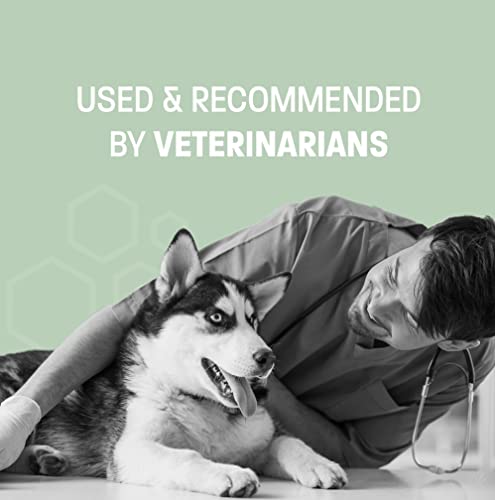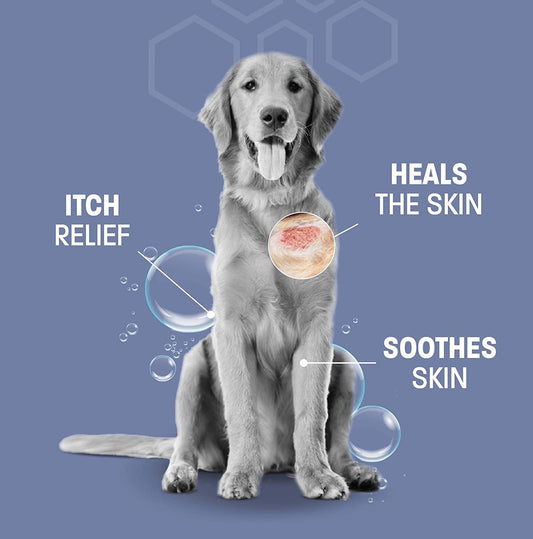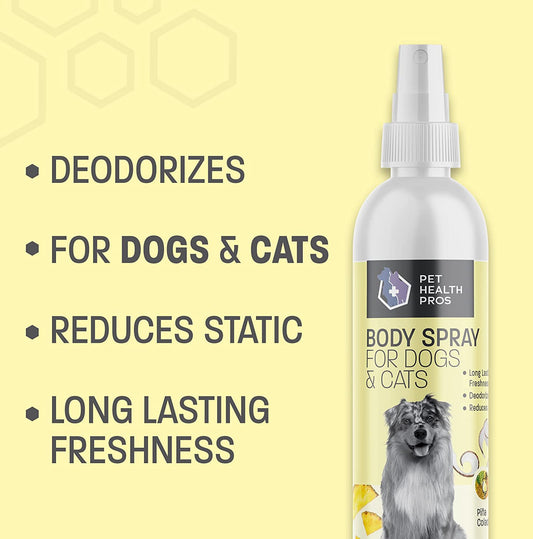Say Goodbye to Dog Chewing with This Effective Repellent
Dog chewing can be a frustrating and destructive behavior. Whether it's your favorite pair of shoes or the corner of your furniture, dogs have a natural instinct to chew. Understanding why dogs chew and identifying the root cause is essential in effectively addressing this behavior. In this article, we will explore different types of chewing behavior, the possible reasons behind them, and how to choose the right dog chewing repellent. We will also discuss techniques for applying the repellent effectively to prevent further damage. By following these guidelines, you can say goodbye to dog chewing and keep your belongings safe.
Key Takeaways
- Understanding why dogs chew is crucial in addressing the behavior.
- Boredom, anxiety, teething, and dental issues can be common causes of chewing.
- Choosing the right dog chewing repellent involves considering natural and commercial options.
- Training techniques can be used to discourage chewing behavior.
- Proper application and monitoring of the repellent are essential for effectiveness.
Understanding Dog Chewing Behavior
Why do dogs chew?
Dogs have a natural instinct to chew, and it serves several purposes. Chewing helps keep their teeth clean and healthy by removing plaque and tartar buildup. It also provides mental stimulation and helps relieve boredom. However, excessive chewing can be a cause for concern.
Different types of chewing behavior
Understanding the different types of chewing behavior in dogs is crucial for addressing the issue effectively. Dogs may chew for various reasons, including teething, boredom, anxiety, and dental issues. By identifying the root cause of your dog's chewing behavior, you can implement the appropriate strategies to prevent it.
Identifying the Root Cause of Chewing
Boredom and lack of mental stimulation
Boredom and lack of mental stimulation can be major factors contributing to a dog's chewing behavior. Dogs are intelligent animals that require mental exercise to keep them engaged and prevent boredom. When dogs are left alone for long periods of time without any mental stimulation, they may resort to chewing as a way to alleviate their boredom. Providing interactive toys and puzzles can help keep a dog's mind active and prevent destructive chewing.
Anxiety and stress
Anxiety and stress are common triggers for dog chewing behavior. When dogs experience anxiety or stress, they may resort to chewing as a coping mechanism. This behavior helps them alleviate their feelings of unease and provides a temporary distraction. However, excessive chewing due to anxiety and stress can lead to destructive behavior and potential harm to the dog.
To address anxiety and stress-related chewing, it is important to identify the underlying cause. This can be done through observation and consultation with a veterinarian or animal behaviorist. Once the root cause is identified, appropriate measures can be taken to alleviate the anxiety or stress and discourage chewing.
One effective way to address anxiety and stress-related chewing is through the use of dog calming treats. These treats are specifically formulated to support the nervous system and help reduce stress and tension in dogs. They often contain ingredients like ginger and melatonin, which have calming properties. Dog calming treats can be given to dogs during stressful situations or as a daily supplement to promote overall calmness.
Another option to prevent chewing caused by anxiety and stress is the use of anti-chewing sprays. These sprays contain bitter agents that deter dogs from chewing on objects they shouldn't. They can be applied to furniture, plants, and other household items to discourage chewing. It is important to choose a spray that is safe for indoor and outdoor use and does not cause harm to the dog or damage to the items being sprayed.
In addition to using calming treats and anti-chewing sprays, it is essential to address the underlying anxiety or stress through behavior modification techniques. This may include providing mental stimulation, creating a safe and comfortable environment, and implementing positive reinforcement training methods. By addressing the root cause of anxiety and stress, and providing appropriate alternatives for chewing, dog owners can effectively manage and reduce chewing behavior.
Teething and dental issues
Teething and dental issues can be a common cause of chewing behavior in dogs. Teething is a natural process where puppies lose their baby teeth and adult teeth start to grow in. During this time, puppies may experience discomfort and itching in their gums, leading them to chew on objects to relieve the pain. It is important to provide appropriate chew toys during this stage to redirect their chewing behavior.
Dental issues, such as tooth decay or gum disease, can also contribute to chewing behavior in dogs. If a dog is experiencing dental pain or discomfort, they may chew on objects to alleviate the discomfort. Regular dental care, including brushing their teeth and providing dental treats, can help prevent dental issues and reduce the likelihood of chewing.
To address teething and dental issues, it is important to consult with a veterinarian for proper diagnosis and treatment. They may recommend medicated wipes or other dental products to help alleviate discomfort and promote oral health.
Choosing the Right Dog Chewing Repellent
Natural repellents
Natural repellents can be an effective way to deter dogs from chewing on unwanted items. These repellents are typically made from natural ingredients that are safe for both dogs and the environment. They work by emitting a scent or taste that dogs find unpleasant, discouraging them from chewing. Some natural repellents contain ingredients such as bitter apple, citrus, or vinegar, which dogs dislike. These repellents can be a great alternative to harsh chemicals and can provide a safe and non-toxic solution to prevent chewing behavior.
Commercial repellents
Commercial repellents are effective solutions for preventing dogs from chewing on furniture, shoes, and other household items. These repellents are specifically formulated to deter dogs from engaging in destructive chewing behavior. They often contain bitter-tasting substances that dogs find unpleasant, discouraging them from biting or chewing on objects. Various brands of commercial repellents are available in the market, offering different formulations and application methods. It is important to choose a repellent that is safe for dogs and does not contain any harmful chemicals.
Training techniques to discourage chewing
When it comes to training techniques to discourage chewing in dogs, there are several effective methods that can be used. One important aspect to consider is your pet's well-being. It is crucial to ensure that your dog's physical and mental needs are being met to prevent destructive chewing behavior.
One technique is to provide appropriate chew toys and redirect your dog's attention to them whenever they start chewing on inappropriate items. This helps satisfy their natural urge to chew while protecting your belongings. Additionally, using positive reinforcement techniques such as praise and rewards when your dog chews on the correct items can reinforce good behavior.
Another technique is to use taste deterrents or bitter sprays on items that your dog is prone to chewing. These sprays have a strong and unpleasant taste that discourages dogs from chewing on them. However, it is important to choose a deterrent that is safe for your pet and does not cause any harm.
It is also essential to create a safe and stimulating environment for your dog. Providing plenty of exercise, mental stimulation, and interactive toys can help alleviate boredom and reduce the likelihood of destructive chewing. Regular playtime and training sessions can also strengthen the bond between you and your dog.
Remember, consistency and patience are key when using training techniques to discourage chewing. It may take time for your dog to learn what is acceptable to chew on and what is not. By providing appropriate alternatives and creating a positive environment, you can help your dog develop good chewing habits and protect your belongings.
Applying the Chewing Repellent Effectively
Identifying target areas
When it comes to preventing dog chewing, it is important to identify the target areas where your dog is most likely to engage in this behavior. These areas can vary from one dog to another, but common target areas include furniture, shoes, electrical cords, and household plants. By identifying these areas, you can take proactive measures to protect them and redirect your dog's chewing behavior.
One effective way to deter chewing in target areas is by using a dog chewing repellent. These repellents are designed to have a bitter taste or smell that dogs find unpleasant, discouraging them from chewing on the sprayed surfaces. There are different types of repellents available, including natural options and commercial products. It is important to choose a repellent that is safe for your dog and effective in deterring chewing.
In addition to using repellents, it is also important to provide your dog with appropriate chew toys and other outlets for their chewing needs. This can help redirect their chewing behavior away from your belongings and onto more appropriate items. Regular exercise and mental stimulation can also help reduce boredom and prevent destructive chewing.
Remember, consistency is key when applying a chewing repellent. It may take some time for your dog to learn that certain areas are off-limits, so be patient and consistent with the application. Monitor the target areas regularly and reapply the repellent as needed to maintain its effectiveness. With proper identification of target areas and the use of effective repellents, you can help prevent dog chewing and protect your belongings.
Proper application techniques
Proper application techniques are crucial for the effectiveness of the dog chewing repellent. When applying the repellent, it is important to follow the instructions provided by the manufacturer. This ensures that the repellent is used correctly and in the right amount. Additionally, it is recommended to clean the target areas before applying the repellent. This helps to remove any existing scents or residues that may interfere with the repellent's effectiveness.
To apply the repellent, spray or apply it evenly on the target areas. Make sure to cover all surfaces that your dog may chew on, such as furniture legs, shoes, or electrical cords. Avoid spraying the repellent directly on your dog's fur or skin, as it may cause irritation. Instead, focus on the objects or areas that you want to protect.
Monitor the effectiveness of the repellent and reapply as needed. Some dogs may require more frequent application, especially if they are persistent chewers. Keep an eye on your dog's behavior and if you notice any signs of chewing, reapply the repellent to reinforce the deterrent effect.
Remember, consistency is key when using a dog chewing repellent. Be patient and give the repellent time to work. It may take some time for your dog to learn that the treated objects are off-limits. With proper application and consistent use, you can effectively discourage your dog from chewing on unwanted items.
Monitoring and reapplication
Once you have applied the dog chewing repellent to the target areas, it is important to monitor your dog's behavior closely. Reapplication may be necessary if your dog continues to show interest in chewing on certain objects. Keep an eye out for any signs of chewing or attempts to chew on items that have been treated with the repellent.
To ensure the effectiveness of the repellent, it is recommended to distinguish between normal chewing behavior and potential signs of a more serious issue, such as ringworm. If you notice any unusual behavior or persistent chewing despite the repellent, it is best to consult with a veterinarian for further evaluation.
Here are some additional tips to consider:
- Observe your dog's behavior after applying the repellent to see if there is a decrease in chewing incidents.
- Keep the treated objects accessible to your dog to provide opportunities for learning and reinforcement.
- Rotate the use of different types of repellents to prevent habituation.
Remember, consistency and patience are key when using a dog chewing repellent. With proper monitoring and reapplication, you can effectively discourage your dog from engaging in destructive chewing behavior.
Conclusion
In conclusion, understanding dog chewing behavior is crucial in addressing this common issue. By identifying the root cause of chewing, such as boredom, anxiety, or teething, pet owners can take appropriate measures to prevent it. Choosing the right dog chewing repellent is also important, whether it's a natural or commercial repellent or using training techniques. Applying the repellent effectively involves identifying target areas, using proper application techniques, and monitoring for reapplication. With the right knowledge and tools, dog owners can say goodbye to dog chewing and create a safe and happy environment for their furry friends.
Frequently Asked Questions
How long does it take for the dog chewing repellent to work?
The effectiveness of the dog chewing repellent can vary depending on the product and the dog's behavior. In general, it may take a few days to a couple of weeks for the repellent to start showing its effects. Consistent and proper application is key to achieving the desired results.
Can I use the dog chewing repellent on all types of surfaces?
Most dog chewing repellents are safe to use on a variety of surfaces, including furniture, fabrics, carpets, and plants. However, it is always recommended to test the repellent on a small, inconspicuous area first to ensure compatibility and avoid any potential damage.
Is the dog chewing repellent safe for puppies?
The safety of the dog chewing repellent for puppies depends on the specific product. Some repellents are formulated to be safe for use on puppies, while others may have age restrictions. It is important to carefully read and follow the instructions provided by the manufacturer to ensure the safety of your puppy.
Will the dog chewing repellent harm my dog?
Dog chewing repellents are generally designed to be safe for dogs when used as directed. However, it is important to choose a repellent that is specifically formulated for dogs and avoid using any products that contain harmful ingredients. If you have any concerns about the safety of a particular repellent, consult with your veterinarian.
Can I make my own dog chewing repellent at home?
Yes, there are several homemade dog chewing repellent recipes available that use natural ingredients such as vinegar, lemon juice, or bitter apple. However, it is important to note that homemade repellents may not be as effective or long-lasting as commercial products. Additionally, some ingredients may be harmful to dogs, so it is important to do thorough research and consult with a veterinarian before using homemade repellents.
How often should I reapply the dog chewing repellent?
The frequency of reapplication depends on the specific product and the dog's behavior. In general, it is recommended to reapply the repellent every few days or as needed, especially if the dog continues to show chewing behavior in the treated areas. Regular monitoring and reapplication can help maintain the effectiveness of the repellent.









